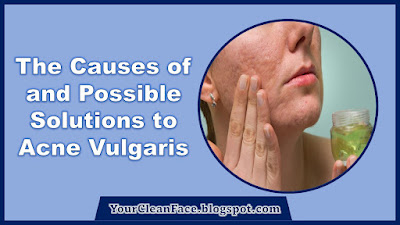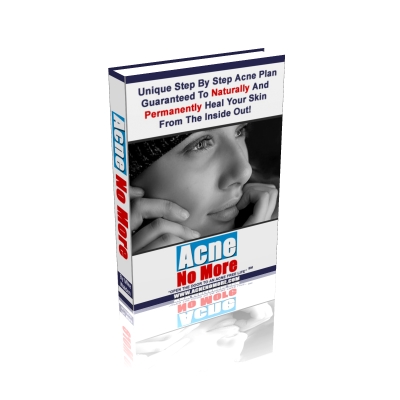Understanding Acne Vulgaris: Causes and Solutions
Acne vulgaris, characterized by plugged pores, pimples, and cysts, can have a significant impact on one's appearance and self-confidence. While most commonly associated with teenagers, acne can affect individuals of any age group. This article explores the underlying causes of acne and offers potential solutions to address this common skin condition.
Causes of Acne Vulgaris
1. Inflammatory Response: Acne lesions are often the result of an inflammatory response triggered by a bacterium called p.acnes. When p.acnes releases inflammatory fatty acids, the body's defense mechanisms react, leading to the formation of inflamed spots.
2. Formation of Plugs: The presence of plugs within the hair follicle duct is necessary for p.acnes colonization. These plugs develop due to increased skin cell turnover, excessive keratin deposition, and heightened sebum production. The accumulation of debris mixed with sebum leads to blockages and plug formation.
Visit: Get the Flawless Skin You Ever Wanted!
3. Reduction in Linoleic Acid Levels: Reduced levels of linoleic acid in the skin can contribute to acne development. This reduction is linked to increased sensitivity to the hormone DHT, which is formed from testosterone. The enzyme 5-alpha reductase facilitates the conversion of testosterone to DHT, impacting the balance of linoleic acid in the skin.
Possible Solutions to Address Acne Causes
1) Hormonal Fluctuations: It is challenging to control hormonal fluctuations directly. Altering natural hormonal balance through interventions such as plant hormones, HRT, or royal jelly may have adverse effects. Maintaining a healthy overall hormonal balance is crucial.
2) Use of Roaccutane: Roaccutane can affect the conversion of testosterone to DHT, but it may lead to systemic side effects. As DHT plays various roles in the body, suppressing its production can have unintended consequences on other bodily functions.
3) Targeted Reduction of DHT: Reducing DHT levels specifically in the pilo-sebaceous unit, where the hair follicles and sebaceous glands are located, can help minimize skin sensitization and linoleic acid loss. By modulating local conditions within the pilosebaceous unit, it is possible to reduce DHT levels during periods of hormonal imbalance without affecting other parts of the body. Products containing tri-ethyl citrate and ethyl linoleate have shown potential in slowing down the enzymatic activity of 5-alpha reductase, thereby reducing local testosterone conversion to DHT.
4) Replenishment of Linoleic Acid: Maintaining adequate levels of linoleic acid in the skin can help regulate oil production, skin cell turnover rates, keratin deposition, and prevent the formation of plugs and p.acnes colonization. While oral linoleic acid supplementation may require high doses that can be toxic, topical preparations or creams containing ethyl linoleate can provide a more targeted approach to deliver linoleic acid to the skin.
5) Linoleic Acid Supplementation: Although oral supplementation alone may not significantly impact skin levels of linoleic acid, consuming foods high in linoleic acid or taking supplements can still have overall health benefits. However, finding a way to supplement skin linoleic acid levels through topical applications can directly influence the acne process. Special delivery technologies utilizing molecular structures like Oleosomes and Drysyst technology can facilitate the absorption of linoleic acid into the skin. Additionally, products containing ethyl linoleate can be beneficial as skin bacteria help release linoleic acid when the compound is broken down.
6) Normalization of Skin Cell Turnover: Regulating skin cell turnover and reducing skin thickening are essential to prevent blockages in the pilo-sebaceous duct. Retinol-based creams have demonstrated the ability to normalize skin cell turnover rates; however, they may increase sensitivity to UV radiation and potentially raise the risk of skin cancer. Another chemical compound, triethyl citrate, can normalize keratin deposition and skin cell turnover rates without causing photosensitivity.
7) Oil Control: Managing oil levels on the skin's surface is crucial but can be challenging. Simply using detergents to remove surface oil can trigger a negative feedback loop that leads to increased sebum production. However, mild detergents can still assist in controlling the acne process. Clinical trials have shown that a combination of triethyl citrate and ethyl linoleate can reduce sebum production rates by up to 68% on average.
8) Use of Exfoliants and Detergents: Exfoliants and detergents can help unclog hair follicle ducts by dissolving and removing plugs and reducing skin debris levels. Chemical exfoliants such as salicylic acid and pyruvic acid have demonstrated sebo-static effects, temporarily slowing down oil production. Glycolic acid, another commonly used chemical exfoliant, has not shown the same sebo-static effect. It is essential to consider the skin's sensitivity and use gentle, non-irritating cleansing agents that contain silicone and glucose-based ingredients to address overactive skin cell turnover and thickening.
9) Control of p.acnes Levels: While keeping the hair follicle ducts open and oxygenated can help prevent blockages, controlling p.acnes growth without harming beneficial skin bacteria is crucial. Antibiotics may be necessary in cases of pustular scarring acne; however, it is important to avoid attacking skin staphylococci due to the risk of developing MRSA. Modifying conditions within the pilosebaceous unit to inhibit p.acnes enzymes can slow down the acne process and reduce the availability of nutrients for bacterial growth.
10) Reduction of Inflammation: Addressing bacteria and inflammation simultaneously is crucial. Controlling bacteria can reduce inflammation, and anti-inflammatory agents can help manage the inflammatory response. Inhibiting the release of inflammatory fatty acids and neutralizing inflammatory free radicals are additional strategies to control inflammation. Antioxidants, particularly skin-soluble versions of vitamin C (ascorbic acid, ascorbyl palmitate, and ascorbyl tetra-isopalmitate), can be effective in managing the inflammatory process.
In Summary
Developing a product range that addresses the underlying causes of acne can revolutionize acne treatment options. Such a range should aim to slow down local DHT production, increase linoleic acid levels in the skin, normalize skin cell turnover and sebum production, and include sebo-static exfoliants or skin-friendly cleansers. Antibacterial agents that target p.acnes without disrupting beneficial skin bacteria and antioxidants to control inflammation are crucial components. Collaboration with eminent dermatologists and conducting independent trials can provide valuable support for the efficacy of these products. Ensuring reasonable pricing would make this comprehensive product range a dominant force in the acne treatment market.
Discover the Ultimate Solution to Acne Vulgaris at AcneNoMore.com!
Are you tired of battling stubborn acne that affects your confidence and self-esteem? Look no further! Introducing AcneNoMore.com, the ultimate destination for conquering acne vulgaris with a revolutionary holistic system developed by renowned expert Mike Walden. Don't waste another moment searching for creams or tricks that offer temporary relief. It's time to address the root causes of acne and find lasting solutions.
At AcneNoMore.com, you'll uncover the comprehensive guide on "The Causes of and Possible Solutions to Acne Vulgaris." Mike Walden's holistic approach goes beyond quick fixes, focusing on transforming your skin from within. By understanding the underlying factors contributing to acne, you'll gain the knowledge needed to regain control over your skin health.
Why trust AcneNoMore.com? Mike Walden's system has helped thousands of individuals achieve remarkable results and break free from the frustrating cycle of acne. With his expert guidance, you'll discover how to balance hormonal fluctuations, reduce inflammation, and regulate oil production. Say goodbye to plugs, pimples, and cysts!
Don't miss out on this life-changing opportunity! Click now to visit AcneNoMore.com and gain exclusive access to Mike Walden's groundbreaking system. Say hello to clear, radiant skin and embrace a newfound sense of confidence. Unleash your true beauty and unlock the secrets to acne-free living.
Remember, your journey to acne-free skin starts with a single click. Visit AcneNoMore.com now and take the first step towards a brighter, blemish-free future!
[Click Here to Visit AcneNoMore.com and Begin Your Journey to Clear Skin!]



















0 Comments